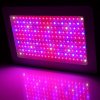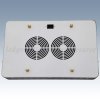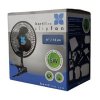I've installed about 8 or 9 of these COB's now. I'm still learning, but have a better idea now than before.
Remember earlier in this thread I wrote that it'd be suicidal to use straight-slot screws? I ignored my own advice the other day. Sure enough, the straight-slot screwdriver slipped off the screw and skidded across a new CXA3070. I was so angry I had to stop for a while. There was no visible damage to the CXA so I totally lucked out.
New Rule - do not assemble without magnification. I have one of those hobby visors you wear on your head. Flip the visor down for magnification, flip it up out of the way when not needed. The other day I thought I was done installing a CXA. I inspected it very closely with the visor. There was a tiny particle underneath the COB. That speck of dirt was holding a third of the COB off the sink. Took it all back apart. Found the speck of dirt stuck to the sink. Flicked it off. Put it back together. Inspect. Another speck of dirt. Disassemble. This one was stuck in the paste (TIM) on the back of the COB. I cleaned a finger off with some alcohol and a rag, then swept the dirt off. Cleaned my finger again, and used it to carefully re-smear the TIM across the back of the COB. I was listening to my finger while doing this. If I felt any grittiness at all that COB was going to get an alcohol rinse and we'd start all over from scratch.
I didn't feel any grittiness. I rinsed the heatsink surface with alcohol and buffed it clean. Third time's the charm.
BTW, if you don't have one of
these, please consider getting one. Load it up with at least that 91% alcohol (don't waste your time with the standard 70%) and you'll have a super handy tool for COB work. Also very useful for cleaning up after pipe maintenance, etc.
WTH, rollitup still hasn't made hyperlinks more obvious???
I've written previously that these Ideal COB holders shouldn't be installed on a surface that's too small. The holders have four contact points - two metal dimples and two white plastic feet - that are supposed to rest against the sink, as shown in stardustsailor's excellent #11 post in this thread. It drives me nuts when I see guys showing their COB holders hanging off the top of the CPU heatsinks. That's NOT the proper application for these COB holders. The sink must be large enough to contact all four points if you want the holder to function as it was intended. As we've seen, you can get away with two contact points. But it's not the correct way to do it.
Lest you think I'm just being a perfectionist, let me explain how important this is. Let's do an experiment. Install an Ideal COB holder without a COB. Start tightening the screws. As the screws start to bear down on the holder, the entire holder flexes so that the two white plastic feet make contact. Untwist the screws a half turn - the holder unflexes and the white plastic feet lift. Tighten the screws, watch the holder flex and the feet touch down.
Now take it all apart and install with a COB. As has been discussed earlier, these holders don't bear down on the COB very hard. If the white plastic feet don't touch down when you torque the two screws, something's wrong. The answer is NOT NOT NOT to torque the two screws down harder. The proper response is to inspect your work very closely. Either the COB slipped partway out of the holder, or there's dirt under the COB. I described above how I had to disassemble and clean 3X before finally getting it right. The two times there was dirt between the COB and the sink, the white plastic feet would not set against the sink even though the screws were snug. When I finally got the contamination out of the COB's contact patch, the white plastic feet finally made contact with the sink. So, during that last quarter turn of the two screws, watch those white plastic feet. What they do is a good indication of whether you're on track or not.
If you're using an under-sized heat sink you lose that indication.
Something else I've started doing that you might find helpful. With the COB in place, and the screws just barely snugged, I've started reaching between the holder and the COB with a very. very small screwdriver. You know how the Ideal holder has that little spring arm that's supposed to hold the COB positioned during installation? I'll go to the opposite side of the COB and reach in there with that screwdriver. Then I'll exert a tiny amount of leverage. I just want to see the COB move against the spring arm, then move back when I stop levering with the screwdriver. The COB can pop partially out of the little pocket that it's supposed to stay in during assembly. With the holder snug but not yet tightened, the screwdriver trick tells me that the COB's properly positioned and can't be damaged by tightening the screws the rest of the way.
Although I've tried to explain this as clearly as possible, it will all sound like nonsense to those of you who haven't used the Ideal COB holders. Hopefully it'll make some sense to those who have.











